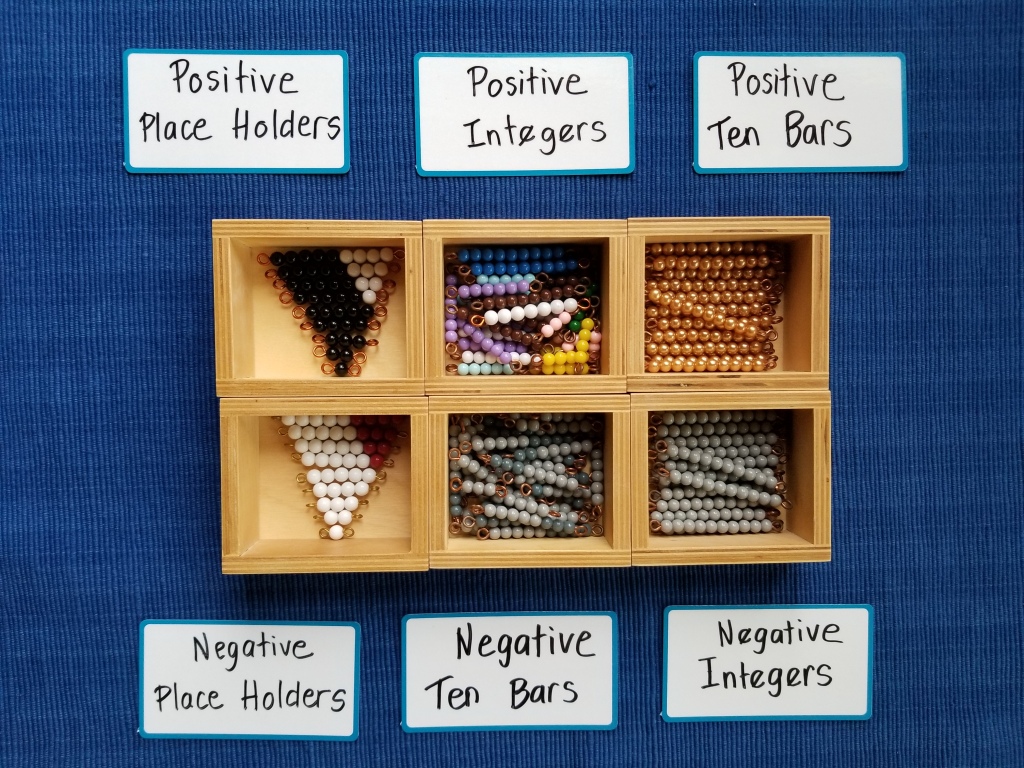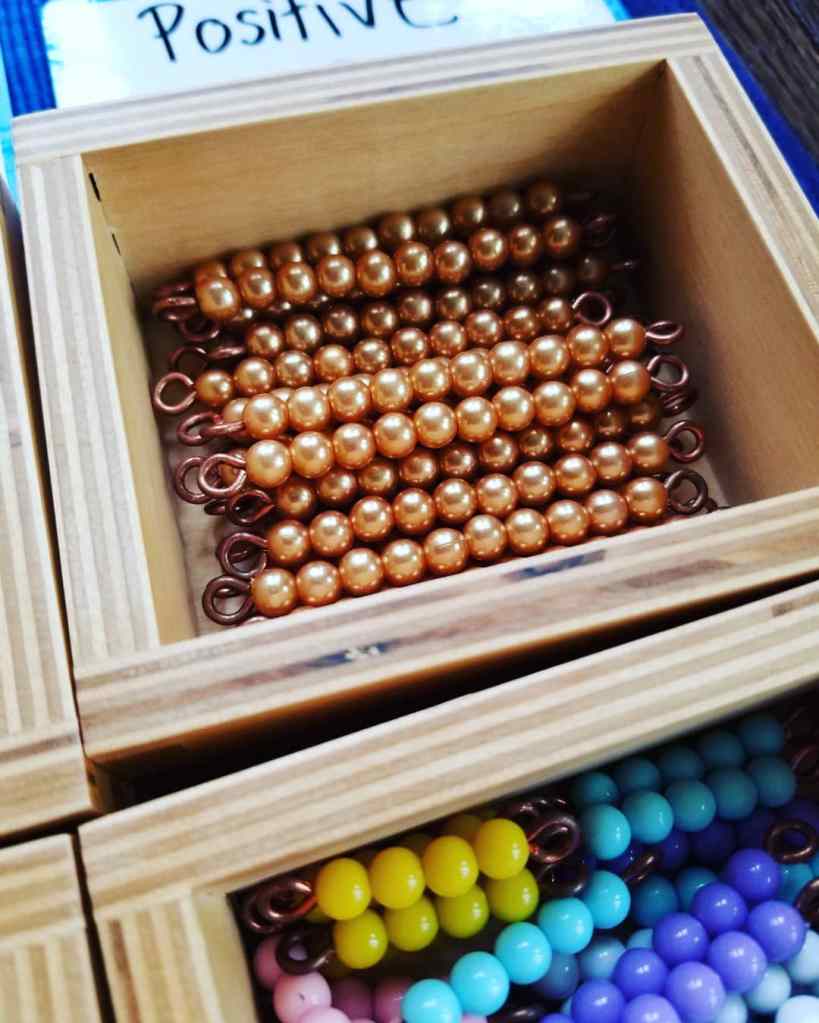- Math, 9+

- Montessori math materials aim to aid children develop a mathematical mind by using conceptual math, rather than procedural math.
- In Primary classrooms (age 3-6), children are introduced to the Addition Snake Game, and the Subtraction Snake Game, which provide ample of practice with the decimal system. Children build golden bead snakes by counting and replacing colored bead bars.
- In Elementary classrooms, children are introduced to the concept of negative numbers (-2, -5…) using the Elementary Negative Snake Game. They are naturally familiar with negative numbers through temperature. Therefore, elementary is a good time to manipulate sign numbers within the 4 arithmetic processes.
- In this post, I would like to share how effective the material is, and also of what it is comprised.
Materials
- 6 Wooden Boxes containing:
- -Positive Integers (1, 2, 3, 4, 5…)
- -Negative Integers (-1, -2, -3, -4, -5…)
- -Positive Ten bars (10 golden bead bars)
- -Negative Ten Bars (10 grey bead bars)
- -Positive Place Holders (black and white beads from 1-9)
- -Negative Place Holders (red and white beads from 1-9)
- Additional materials I used: prepared labels with positive or negative numbers, labels to name each box, an arithmetic signs box, a numbered line.
Why we like it
- The Elementary Negative Snake Game involves lots of executive function stimulation, critical thinking, a deeper understanding of negative numbers, arithmetic practice, and even midline crossing opportunities.

How we used it
- You will need to follow a presentation through a manual or a video to present this material confidently, and effectively.
- Below is a brief description of the process.
- 1- You and the child name the bead boxes, and briefly review the Addition or Negative Snake Games as needed.
- 2- You create an equation that will not have a sum under zero (at least the first times).

- 3- The child builds the snake using positive and negative numbers.

- 4- The child replaces colored beads by golden or grey ten bead bars.

- 5- The child holds places for remaining beads using the positive place holders.

- 6- They do step 4 and 5 above using negative place holders when a negative amount of beads need place holding in the snake.

- 7- They can use a numbered line as needed.

- 8- At the end, gather the beads, positive and negative integers, and process by cancellation. +4 cancels -4… Exchange beads as needed to obtain the numbers of beads you need to cancel.
- 9- The amount that remains of your sum (picture below).

I hope this review was helpful to you. Alison’s Montessori has provided me, at no cost, this traditional Montessori material to allow me to present its benefits.

In conclusion, children will eventually be able to create interesting equations that they will solve independently. They will naturally understand negative numbers and their relationship in different contexts. If you are homeschooling, this set alone should suffice to present all Snake Games from age 5-12. Alison’s Montessori also offers a premium quality version of the Elementary Negatives Snake Game.

- Ready for a lesson? Please follow to receive notifications for my next reviews!